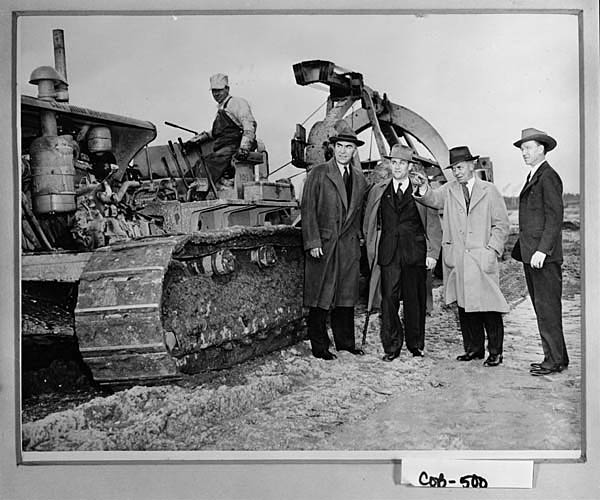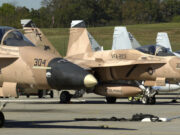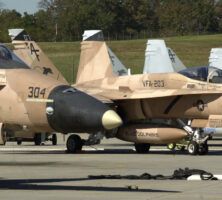From 1943 until 2009 Naval Air Station Atlanta (NAS) trained flight personnel from throughout the southeastern United States. Along with training and other operations, its reservists assisted U.S. Coast Guard operations off the southeastern U.S. coast.
The history of NAS covers two locations: the first one in Chamblee in DeKalb County and the second one near Marietta in Cobb County. In late 1940 the U.S. Navy department selected Camp Gordon, near Augusta, as the site for a Naval Reserve Aviation Base. The new base was officially commissioned and opened for business on March 22, 1941, with the primary responsibility of training navy and Marine Corps aviators. Because Camp Gordon was designated more for army use, a new navy base in Chamblee, on the site now known as DeKalb Peachtree Airport, was officially designated U.S. Naval Air Station in January 1943.

Courtesy of Georgia Archives.
As wartime training was phased out, the Naval Air Reserve Training Program was activated. However, with the evolution of jet fighters and large patrol bombers, it soon became apparent that the limited area at Chamblee could not be used safely for very long. In April 1955 Congress appropriated more than $4 million to start building a new air station at a more suitable location that would allow for longer runways. The site selected was a large military reservation between Marietta and Smyrna that was jointly occupied by Dobbins Air Force Base and the Lockheed Corporation (later Lockheed Martin). The new air station was completed in April 1959.
The 1960s brought to NAS the first assigned tactical training jet, the Lockheed Seastar T2V. The mid-1980s were years of transition and farewells. Among military passenger planes, the U.S. Navy’s last C-118 Liftmaster was retired after thirty-three years of service, and its replacement, the McDonnell Douglas C-9 “Skytrain,” was operated by the Fleet Logistics Support Squadron 46 (VR-46).
During the 1990s, NAS saw phenomenal change and growth. Attack Squadron 205 (VA-205) made the transition from A-7E Corsair to A-6E Intruder attack planes. Although VA-205 was then decommissioned, an A-7 marked the entrance to the air station, and an A-6 stood watch over hangar 5. Fighter Attack Squadron 203 quickly filled the VA-205’s position, bringing the advanced F/A-18 Hornet to Atlanta. In June 1992 the marine presence at NAS was redefined as Marine Air Group 42 relocated to Atlanta, an air component of the Marine Air Ground Task Force (MAGTF) with a full component of helicopter and fixed-wing aviation. In June 1993 the Marine Light Medium Attack Helicopter Squadron 773 (HMLA-773) arrived, along with its UH-1 Huey and AH-1W Super Cobra helicopters.

Courtesy of Atlanta Journal-Constitution.
On November 18, 1995, Carrier Early Airborne Warning Squadron 77 (VAW-77), which flew E-2C Hawkeye radar planes, was commissioned. This reserve squadron served with the U.S. Coast Guard and other federal agencies to provide sophisticated air and surface surveillance of drug trafficking off the southern coast of the United States. In September 1997 Marine Fighter Attack Squadron 142 (VMFA-142) joined the Atlanta team, adding another F/A-18 squadron to the air station.
In May 2005, as part of an ongoing effort to consolidate military installations, the Pentagon announced that NAS Atlanta would be closed. The closure occurred in 2009, and ownership of the station property transferred to the Georgia Department of Defense, which opened the General Lucius D. Clay National Guard Center at the site. The new station is named for Marietta native Lucius D. Clay, a U.S. army officer and veteran of World War II (1941-45) who organized the Berlin Airlift of 1948-49 and served as principal architect of the national interstate highway system. Some of the aircraft at NAS Atlanta was moved to the Aviation Wing of the Marietta Museum of History.







